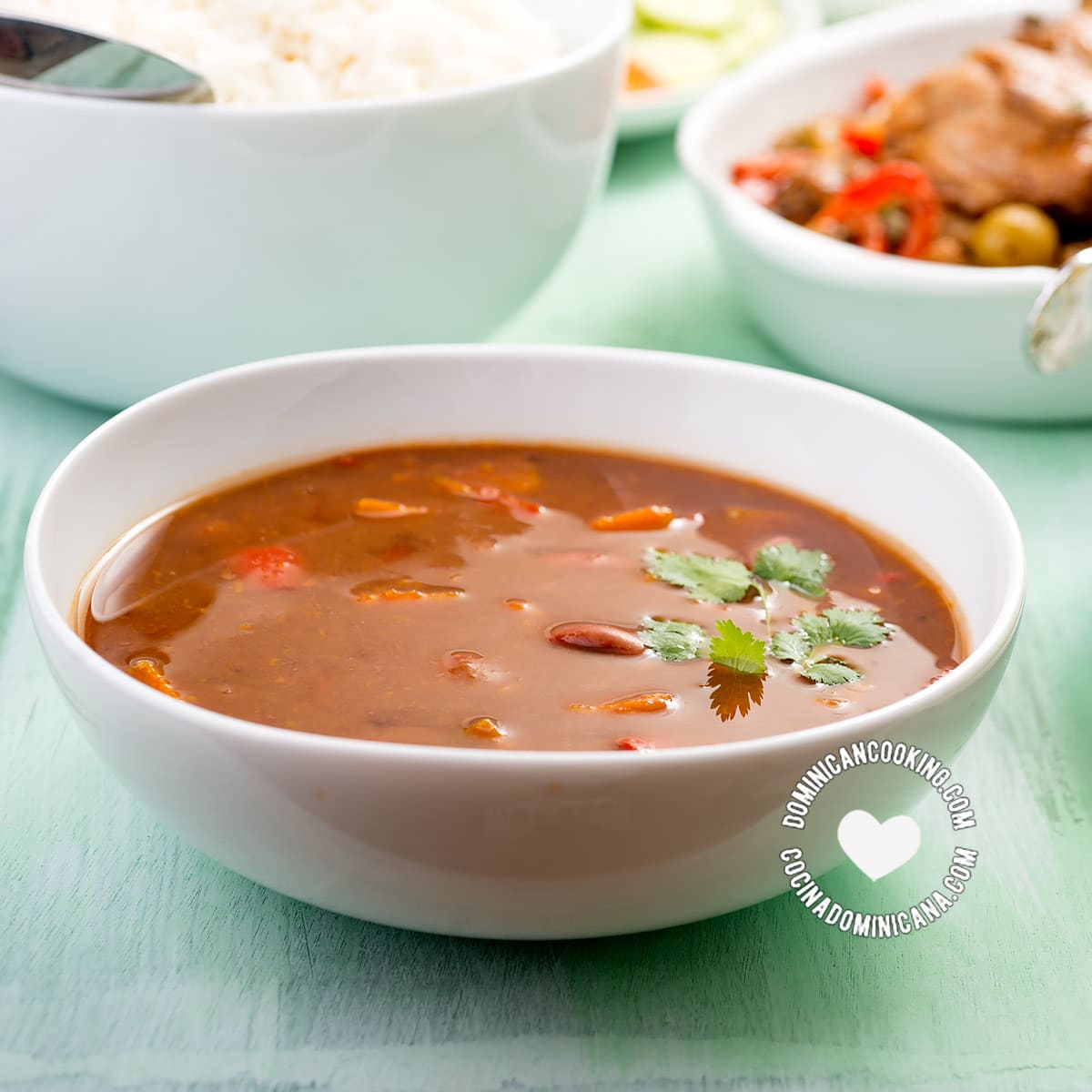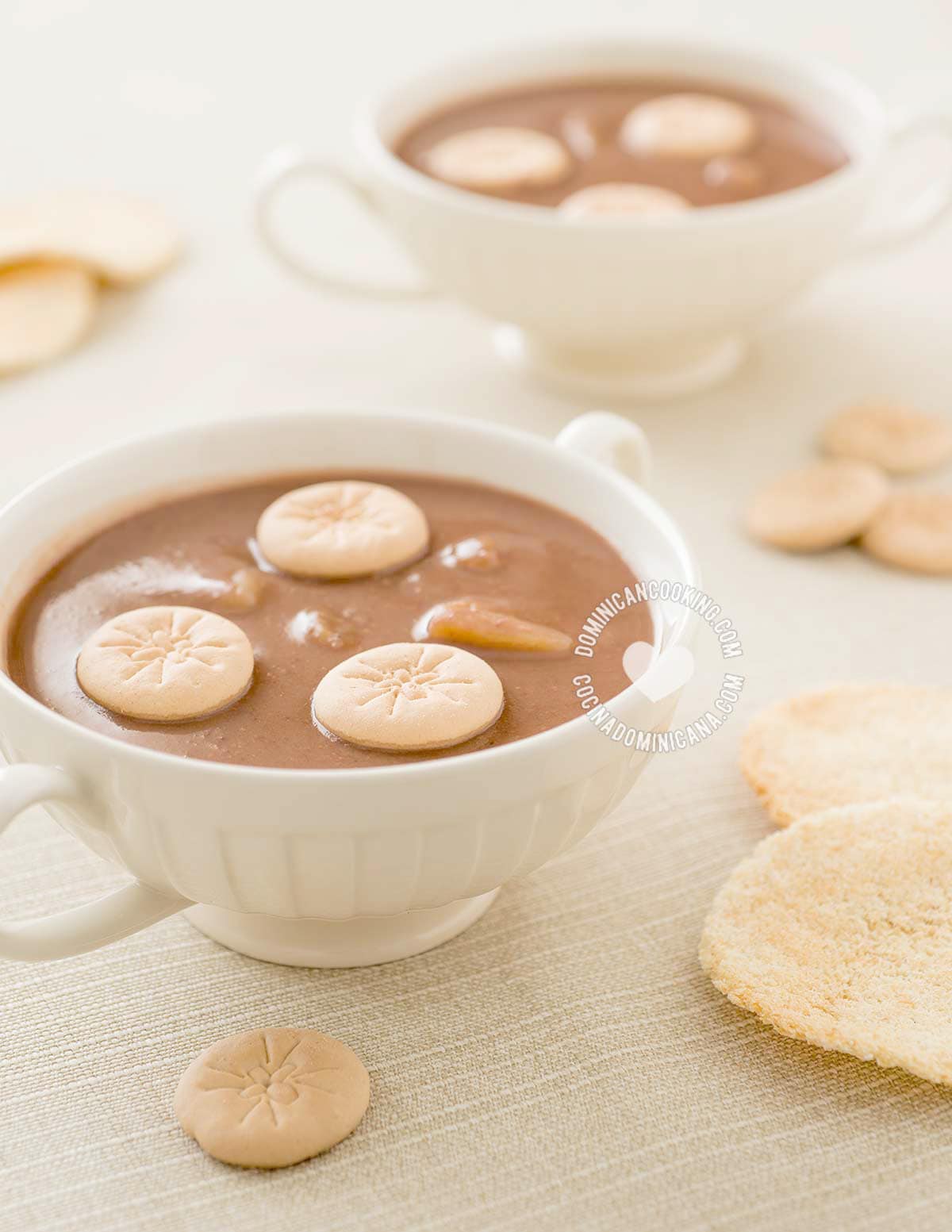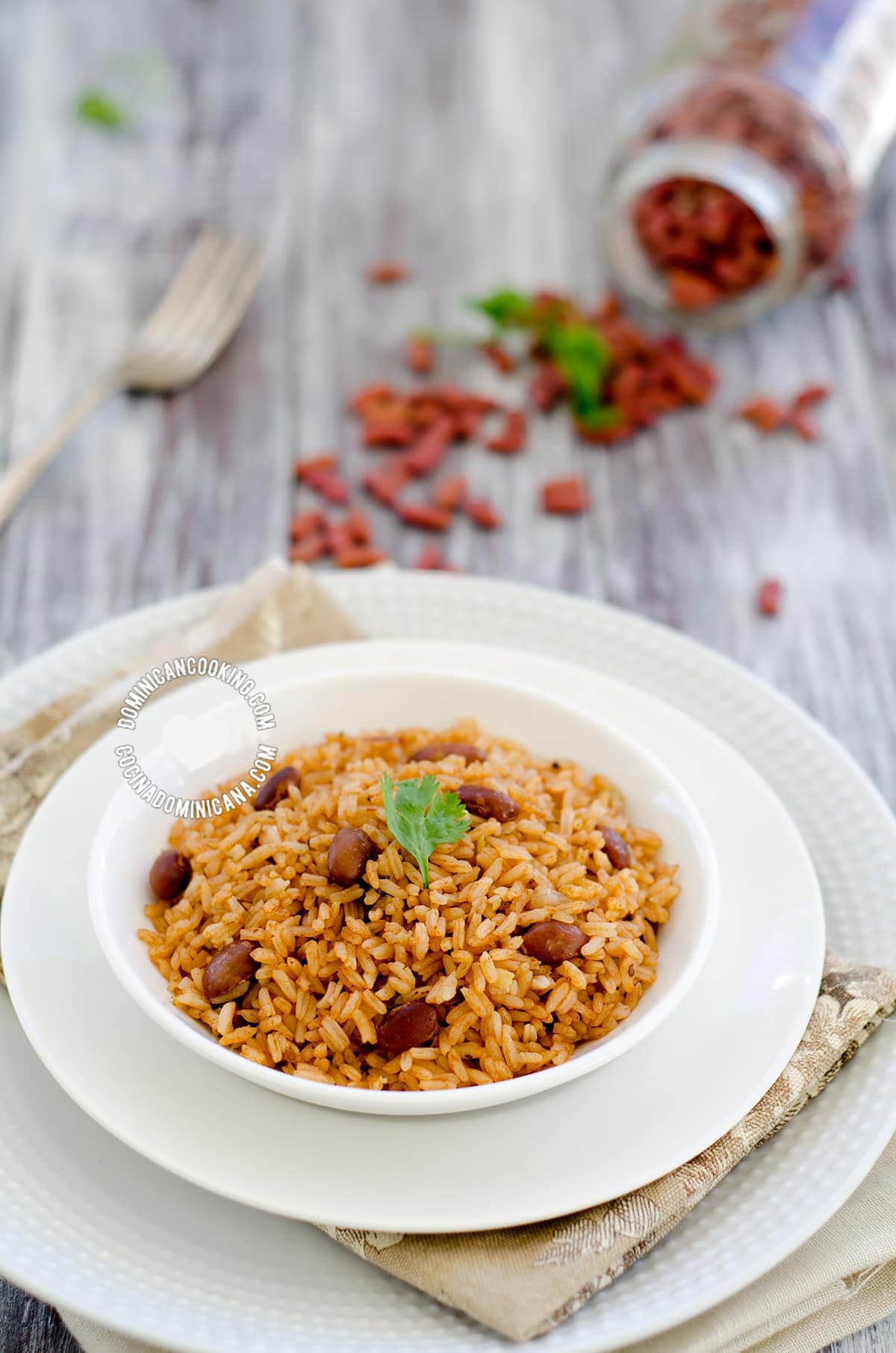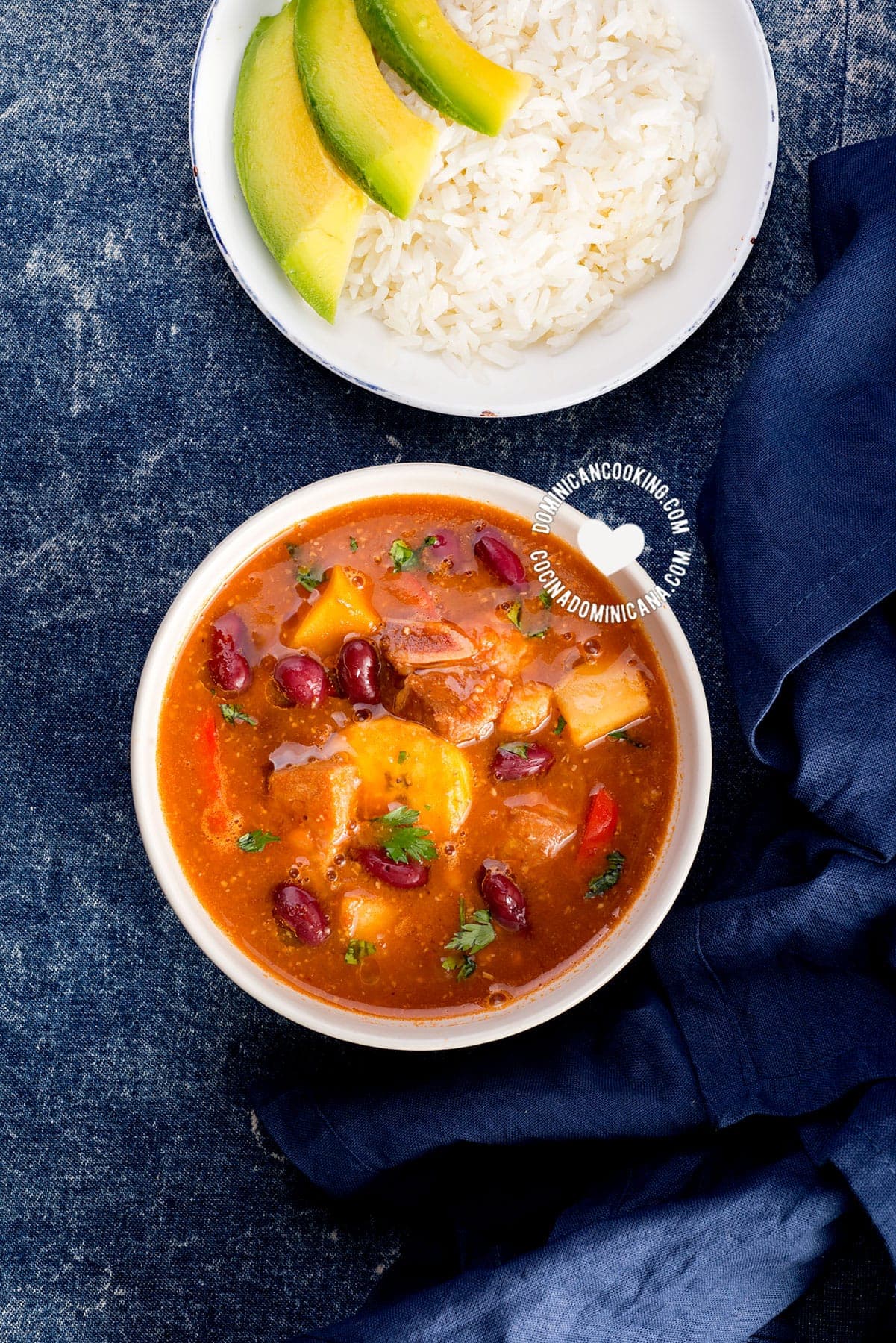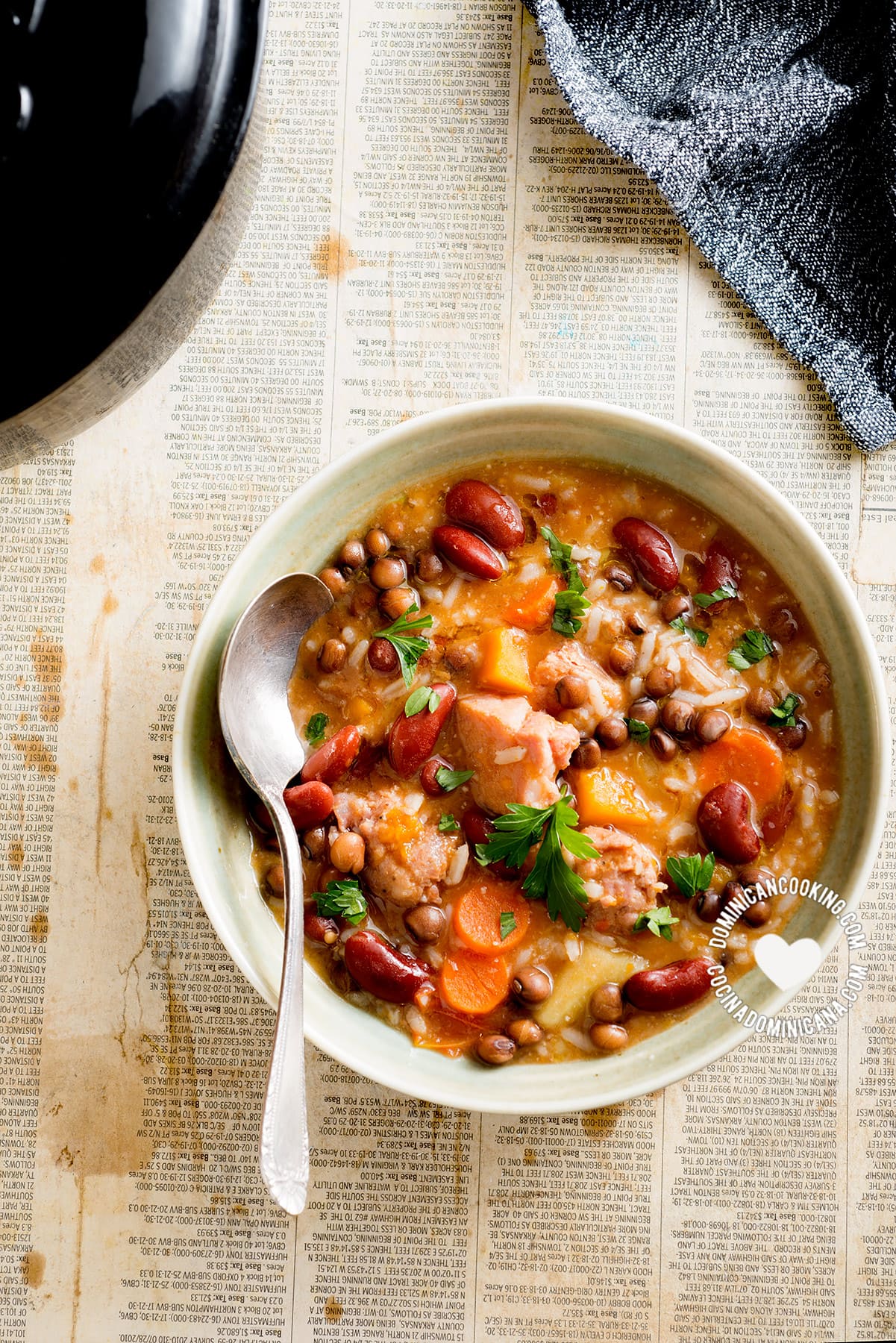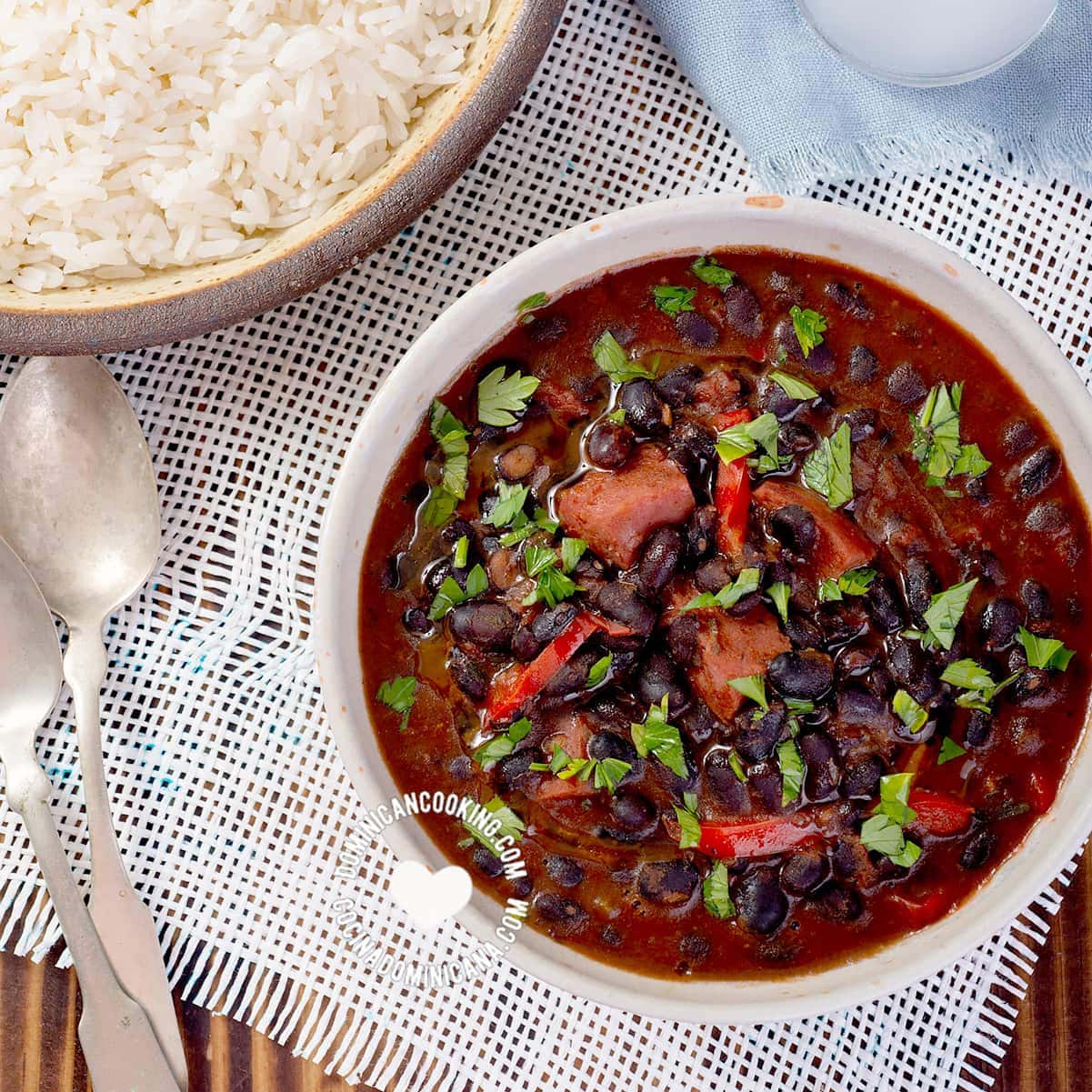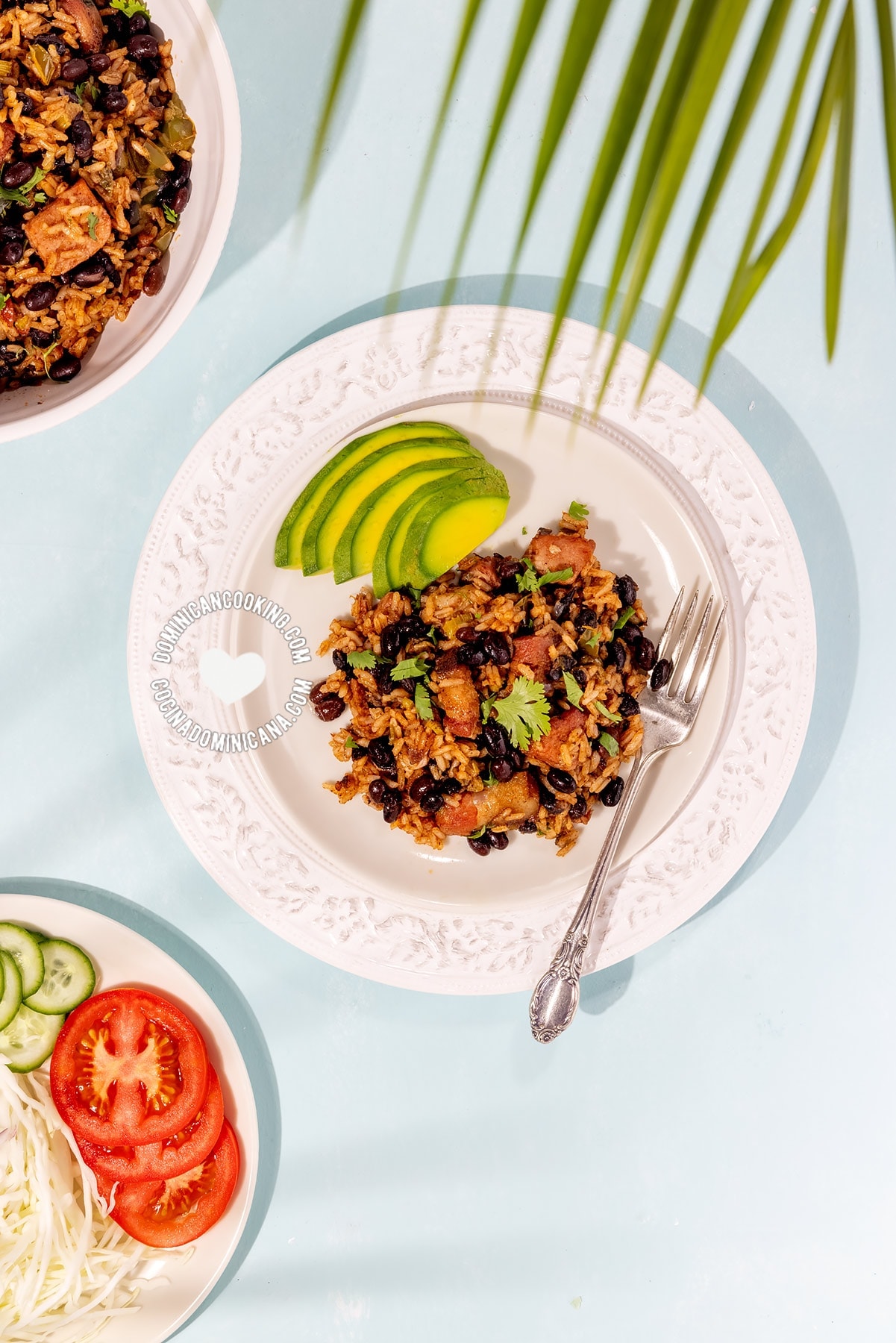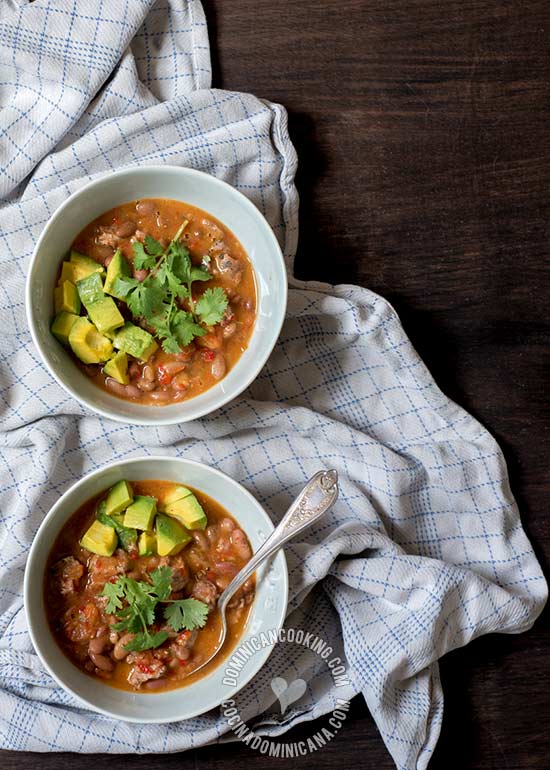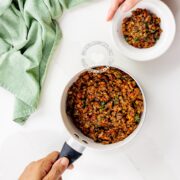Habichuelas is what Dominicans (and Puerto Ricans) call beans, and they are an essential part of our gastronomic culture, and one of the staples of our daily meals. Here I share with your all our best habichuelas recipes, and my tips and secrets to cooking beans like a pro.
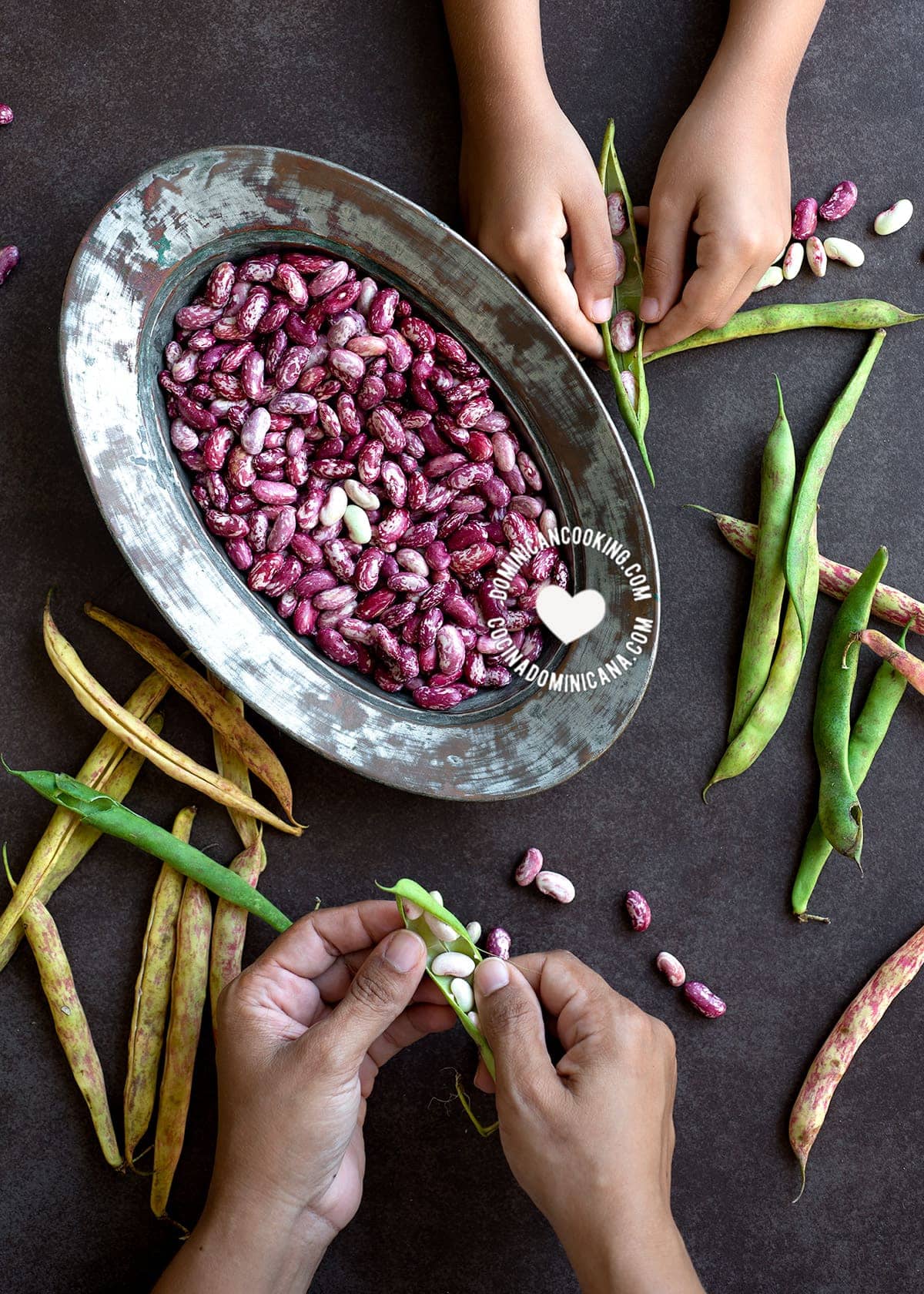
Why we ❤️ it
Beans are inexpensive, versatile, flavorful, nutritious, and easy to find and store. And all these things are part of the reason why they are so popular in Latin America, and especially in our country where it is one of the main ingredients in our cuisine.
We're beans experts, I dare to say.
Popular habichuelas recipes
We serve them as habichuelas guisadas, in stews, as moro (rice and beans cooked together), and even as part of one of our most beloved dessert dishes, but there is some type of habichuela (or legume) on our table nearly every day, and beans are one of the components of La Bandera Dominicana (the Dominican Flag), the iconic traditional Dominican lunch meal. We also cook them in stews (like sancocho de habichuelas, and chambre).
There's so much we can do with habichuelas! Check these wonderful habichuelas recipes.
- Habichuelas Guisadas (Dominican Beans)
- Habichuelas con Dulce (Sweet Cream of Beans)
- Moro de Habichuelas (Rice with Beans)
- Sancocho de Habichuelas or Sopión (Sweet & Spicy Bean Stew)
- Chambre or Chapea (Beans, Rice and Meat Stew)
- Habichuelas (Frijoles) Negros (Stewed Black Beans)
- Moro-Locrio (Rice with Black Beans and Pork)
- Habichuelas Verdes Guisadas (Fresh Shell Beans and Pork Sausage Stew)
What are habichuelas?
Habichuelas is what Dominicans (and Puerto Ricans) call some types of beans, and the most popular dish made with them (habichuelas guisadas).
These are the most common types of beans used in the Dominican Republic by order of most to least popular (in my opinion).
- Habichuelas pintas (pinto beans)
- Habichuelas rosadas (pink beans or cranberry beans)
- Habichuelas rojas (red kidney beans)
- Habichuelas negras (black beans)
- Habichuelas blancas (white beans or cannellini)
- Habichuelas caritas (black eye peas)
We do not call green beans habichuelas but vainitas. Other Spanish names for beans are frijoles and porotos.
Habichuelas picture
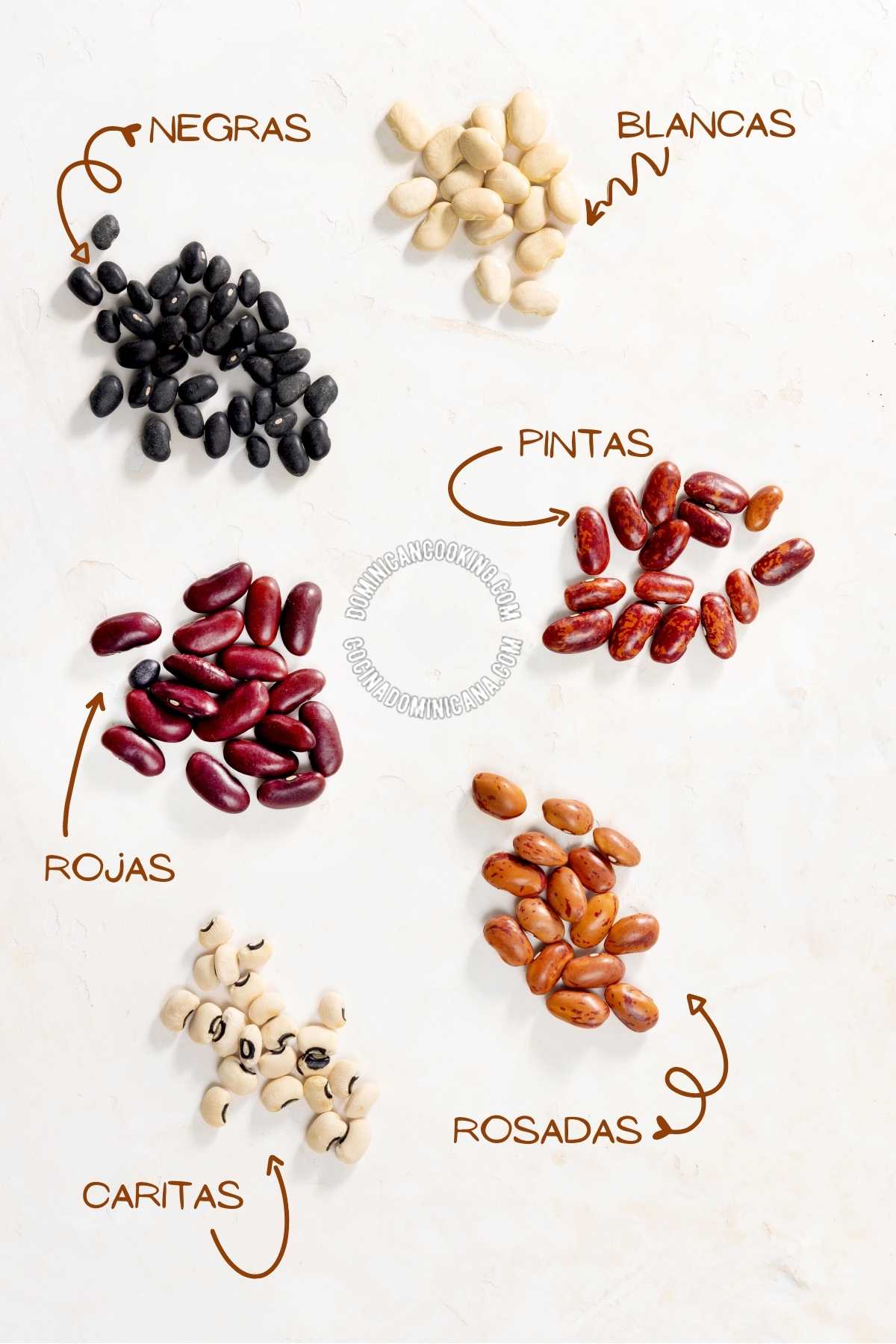
6 types of habichuelas (beans)
How to cook habichuelas
Typically, Dominicans buy dry beans and boil them beforehand. If convenient and able to afford it, canned beans are sometimes used. If available, freshly shelled beans are much preferred. We then proceed with the preparation depending on the recipe and dish in question.
Habichuelas guisadas
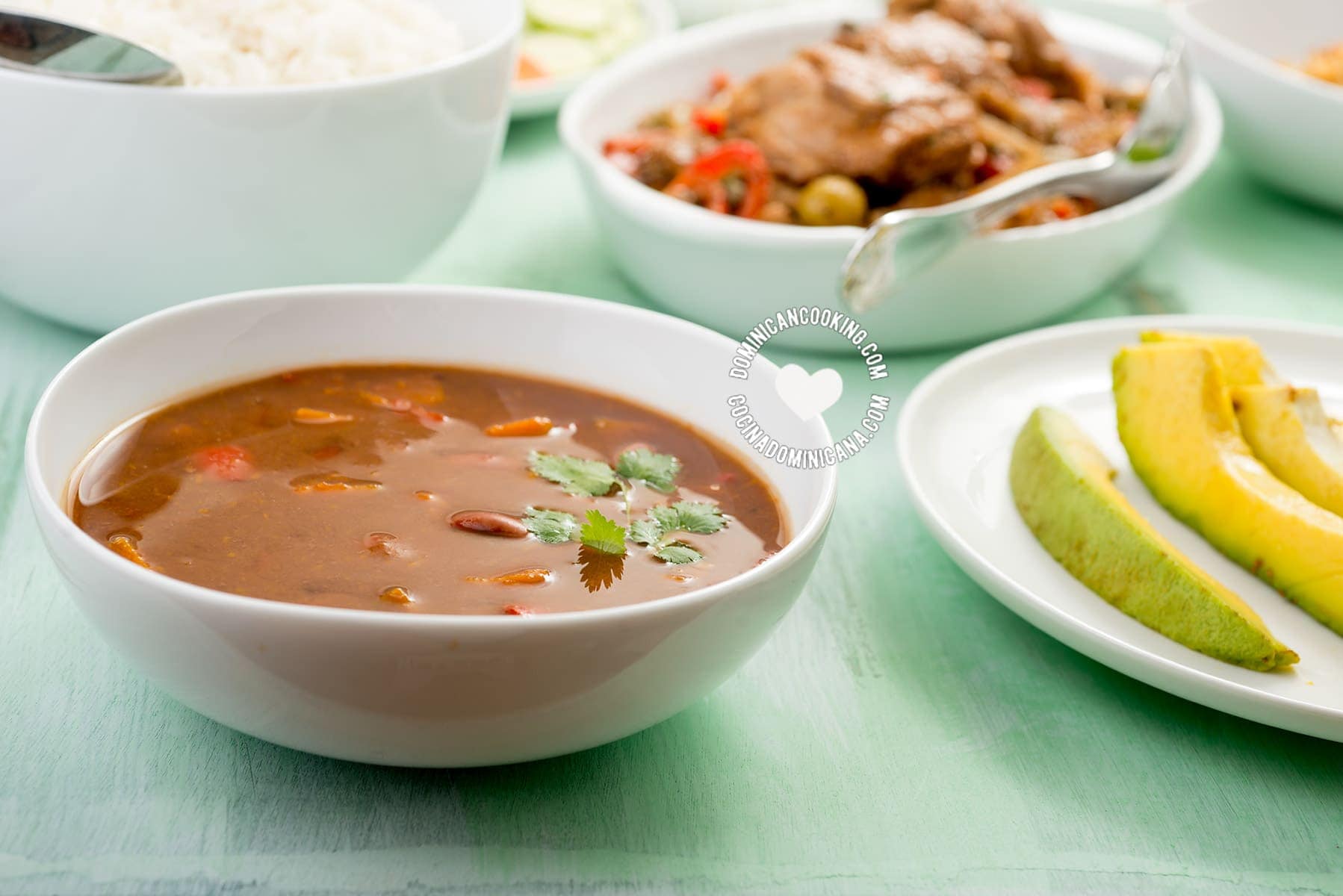
Habichuelas guisadas
Habichuelas guisadas are cooked by sauteeing sazón (Dominican sofrito), and cooking the beans with tomato sauce until they are like a thick stew. Habichuelas guisadas are typically made with red beans (pinto, pink or red kidney beans), but habichuelas negras and habichuelas blancas dominicanas are cooked in the same manner and are also popular.
They are made by sauteing the Dominican sazon ingredients (like oregano, pepper, salt, garlic, cilantro / recaito) and thickening with some mashed beans and by adding auyama (the Dominican pumpkin or calabaza). Cuban beans are typically added bay leaves while cooking, but this isn't common in the Dominican Republic.
We serve habichuelas guisadas with Arroz blanco (white rice), and some meat, typically Pollo guisado (Dominican chicken) or Res Guisada (braised beef), some salad and Tostones.
Moros de habichuelas
Moro (shortened from "moros y cristianos") is what we call a dish of rice and beans cooked together. Generally speaking, if we say moro and don't specify the type of bean, it would be pinto, pink or red kidney beans. Other types of moro will specify the bean used in its name, like moro de habichuelas negras (rice with black beans). They contain about the same seasonings and flavors as habichuelas guisadas, and may be added auyama, and olives.
A hybrid moro dish also combines some type of meat into it (like longaniza sausage, ham, or pork chops). We call it Moro-locrio.
Caldos de habichuelas
These are two popular types of bean-based stews full of our favorite flavors: sancocho de habichuelas is typically made with pinto, or red kidney beans, chambre combines guandules (pigeon peas), pinto, or red kidney beans, vegetables (like auyama, onion, pimiento or aji) seasonings, and rice.
Habichuelas con dulce
Habichuelas con dulce is an iconic and insanely popular Dominican Lenten dish made with beans, milk, coconut milk, sweet potato, and spices. It is made throughout the Lenten period and the Holy Week throughout the Dominican Republic. It is a very different taste than we're accustomed in a beans recipe, but so worth the effort!
How to boil dry beans
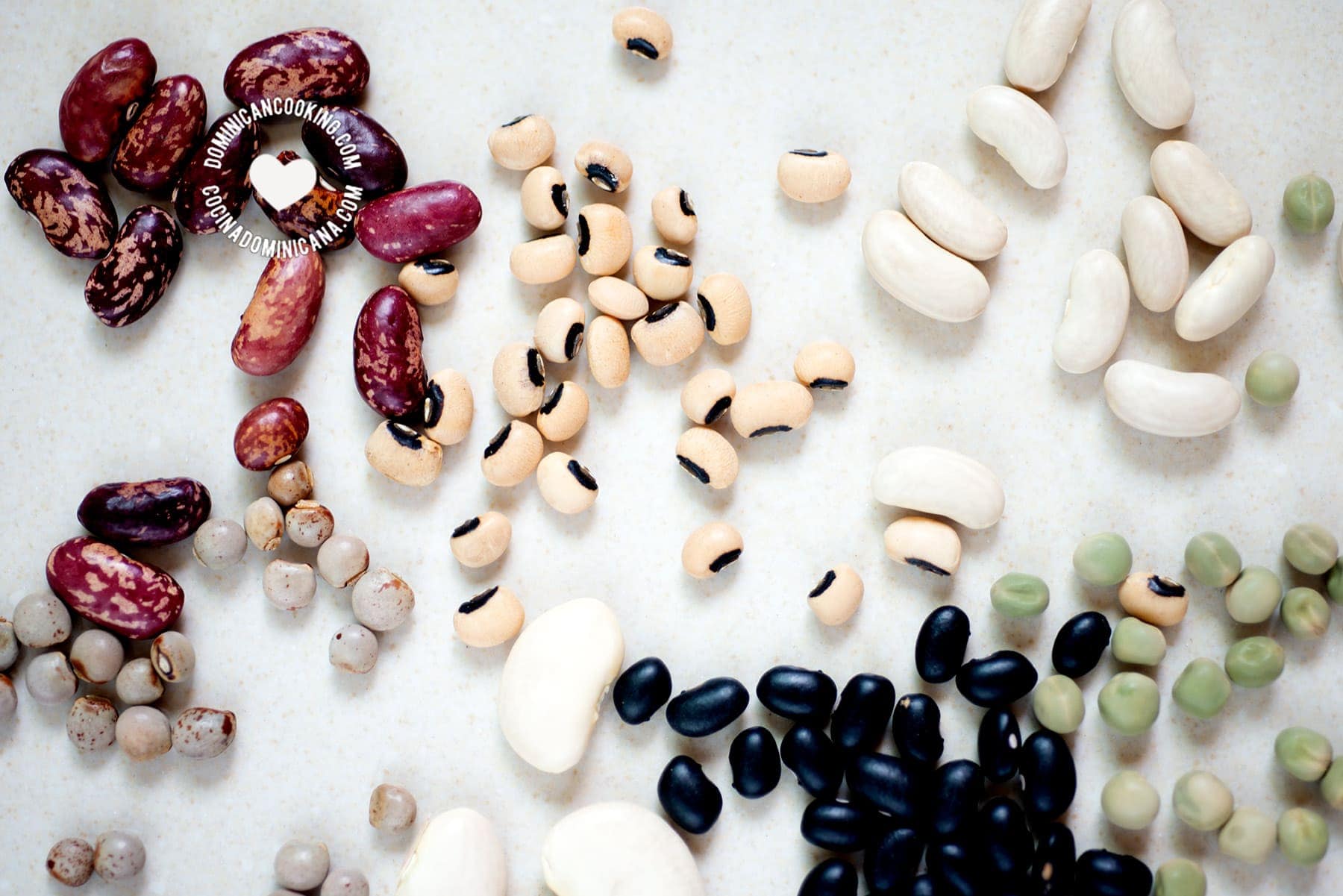
Dry beans, different types
This is my preferred way to cook dry beans:
- Clean the beans: There may be debris, small stones, and beans that are shriveled or rotten. Make sure to discard as many as possible. Rinse them under running water.
- Soak the beans: I strongly advise you to soak the beans in abundant water overnight. This will shorten the boiling time considerably. Once soaked, change the water in which they were soaked (mostly for hygienic reasons) and rinse again to get rid of any debris that floats.
- Boil the beans: The beans are cooked when you can pressure one and the skin breaks easily and the inside is like mashed potatoes. Some people swear by adding a bit of oil to prevent it from foaming too much, so I always add a drizzle of olive oil if I am cooking a savory bean dish.
See how to boil in a regular pot or pressure cooker below.
With pressure cooker
Many Dominican homes own a pressure cooker, which shortens the boiling time even more. If you do have one, add twice add the beans to the pot, and twice the volume of water. Boil for 20 minutes starting counting from the time the valve starts to rotate and whistle. Let it cool down, and check for doneness, repeat for another 10 minutes if necessary, adding another cup of water to maintain the initial level.
Regular pot
If you do not have a pressure cooker (or instant pot), boil over medium heat in a conventional pot, checking regularly to prevent it from drying and burning, and to maintain a stable level of liquid.
Habichuelas de lata
To cook canned beans, or habichuelas de lata, you may use the liquid it comes in, unless you are watching your sodium intake, in which case you should rinse them beforehand.
All our recipes start with beans boiled beforehand, so if you are using canned beans, you can use habichuelas enlatadas (canned beans) in the same way as you would boiled beans.
Habichuelas portions
Typically, we serve about a cup of habichuelas guisadas with rice, with other bean dishes portions will vary.
Freezing habichuelas
Habichuelas are perfect for freezing, and it's how my mom was able to fit them into her busy work schedule. You can boil a whole week's worth of beans and freeze them in airtight single-serve containers. They will last at least a month in the freezer if you make sure there's no air gap to prevent freezer burning.
Calculating bean portions
| Use | To get |
|---|---|
| 1 cup dry beans | 2 cups boiled beans |
| 1 pound dry beans | 6 cups boiled beans |
| 1 can (15 ounces) | 1 ½ cups drained beans |
Habichuelas nutritional properties
The nutritional properties in habichuelas vary depending on the type, but generally speaking habichuelas are a good source of protein, iron, and carbohydrates. They are low in fat, and rich in magnesium, phosphorus, and Vitamin B6. 100 grams of beans contain approximately 347 calories.
Recipe
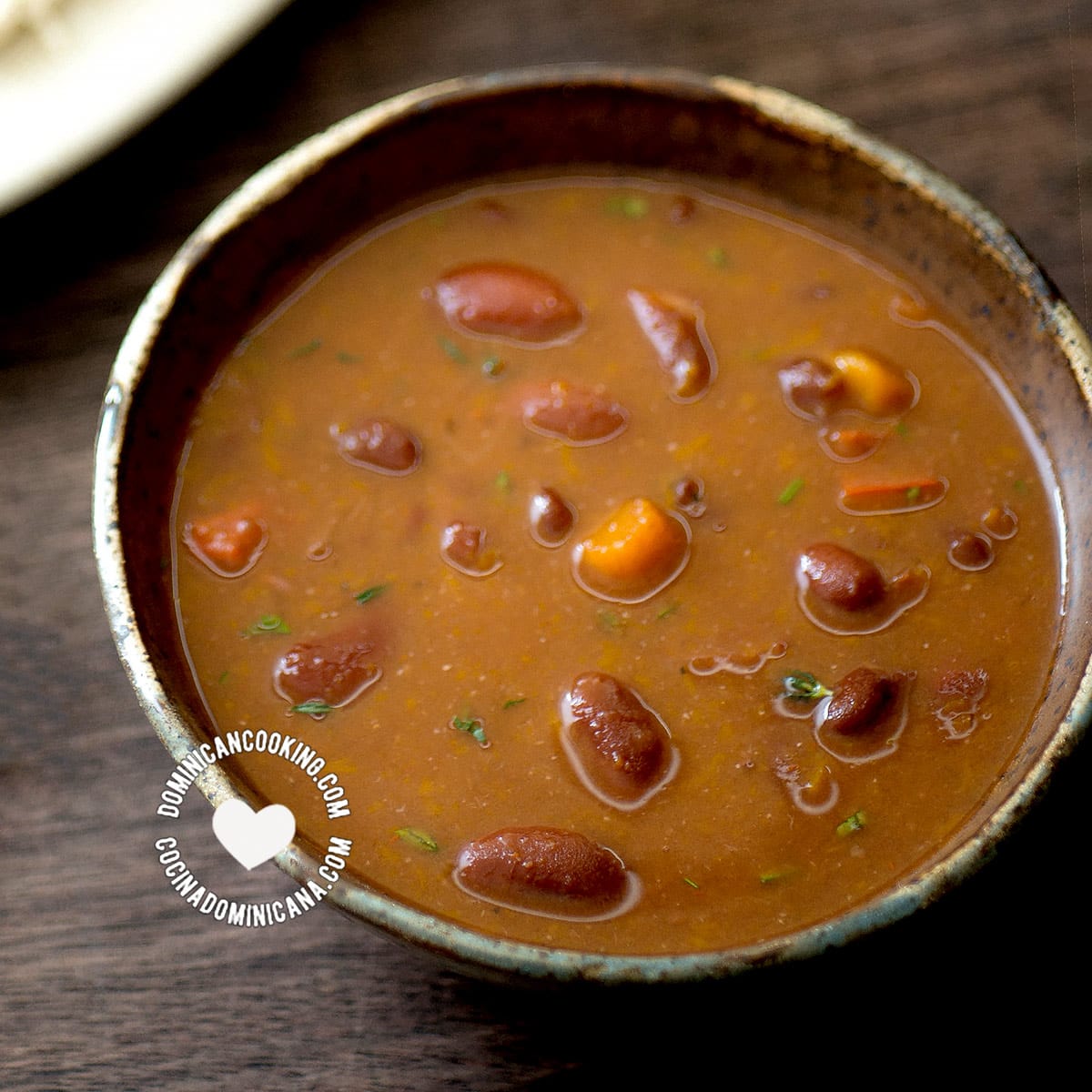
How to Cook Habichuelas - All You Need to Know
Ingredients
- 2 cups dry pinto beans, (or cranberry, or red kidney) [350 grams]
- 1 tablespoon olive oil, (optional, see notes)
- teaspoon Oregano, a few sprigs fresh (optional, see notes)
- 1 small red onion, cut into halves (optional, see notes)
- 2 cloves garlic, (optional, see notes)
- leaves from a celery stalk, chopped (optional, see notes)
- 4 sprigs fresh thyme, or 1 teaspoon of dry thyme (optional, see notes)
- Fresh cilantro, a handful, (optional, see notes)
Instructions
- Clean the beans by removing any debris, small stones, and beans that are shriveled or rotten. Make sure to discard as many as possible. Rinse them under running water and get rid of any debris that floats
- Soak the beans in abundant water overnight. This will shorten the boiling time considerably. Once soaked, change the water in which they were soaked (mostly for hygienic reasons) and rinse again to get rid of any debris that floats.
Boil in pressure cooker / instant pot
- Place the rinsed beans in the pot, and enough water to cover it, plus 1½ cup. If you are cooking a savory beans dish, add the seasonings (olive oil, oregano, onion, garlic, celery, thyme, and cilantro). Boil for 20 minutes starting counting from the time the valve starts to rotate and whistle. Let it cool down, and check for doneness: The beans are cooked when you can pressure one the skin breaks easily, and the inside is like mashed potatoes. Boil again for another 10 minutes if necessary, adding another cup of water to maintain the initial level.
Boil in a regular pot
- Place the rinsed beans in the pot, and enough water to cover it, plus 1½ cup. If you are cooking a savory beans dish, add the seasonings (olive oil, oregano, onion, garlic, celery, thyme, and cilantro). Simmer over medium heat in a conventional pot, checking regularly to prevent it from drying and burning, and to maintain a stable level of liquid.The beans are cooked when you can pressure one, and the skin breaks easily, and the inside is like mashed potatoes
Prepare your beans dish
- Once boiled, continue with the instructions in the beans recipe selected from the list at the top of the post.
Tips and Notes
Nutrition
Nutritional information is calculated automatically based on ingredients listed. Please consult your doctor if you need precise nutritional information.
FAQs
Habichuelas verde or tiernas are shelled beans that are still fresh and not dry.
Habichuelas in English is beans.
Habichuelas guisadas is "stewed beans" in English, and is a stewed bean dish cooked with vegetables, seasonings, and tomato sauce or paste.
Published Mar 23, 2022, and last revised


